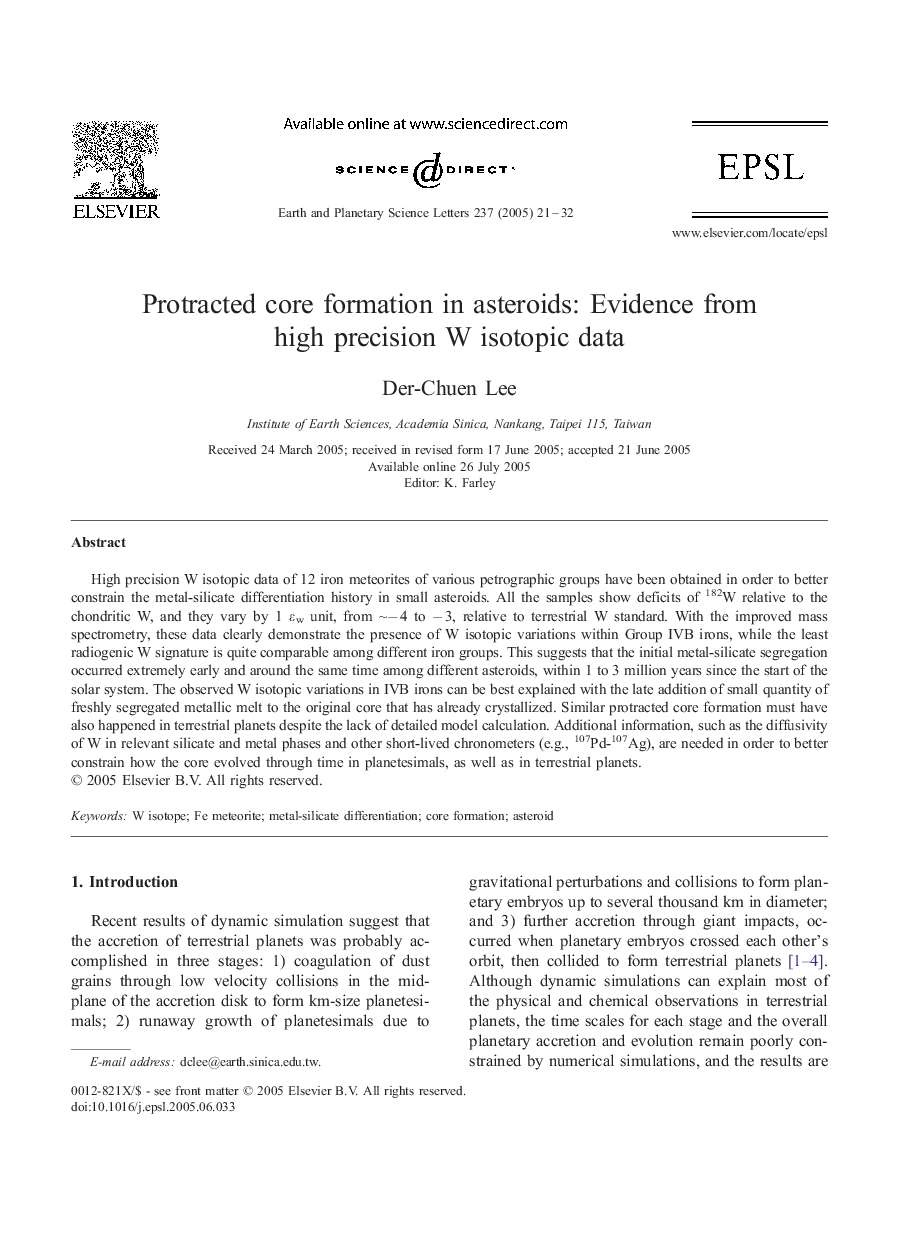| Article ID | Journal | Published Year | Pages | File Type |
|---|---|---|---|---|
| 9522106 | Earth and Planetary Science Letters | 2005 | 12 Pages |
Abstract
High precision W isotopic data of 12 iron meteorites of various petrographic groups have been obtained in order to better constrain the metal-silicate differentiation history in small asteroids. All the samples show deficits of 182W relative to the chondritic W, and they vary by 1 Éw unit, from â¼â 4 to â 3, relative to terrestrial W standard. With the improved mass spectrometry, these data clearly demonstrate the presence of W isotopic variations within Group IVB irons, while the least radiogenic W signature is quite comparable among different iron groups. This suggests that the initial metal-silicate segregation occurred extremely early and around the same time among different asteroids, within 1 to 3 million years since the start of the solar system. The observed W isotopic variations in IVB irons can be best explained with the late addition of small quantity of freshly segregated metallic melt to the original core that has already crystallized. Similar protracted core formation must have also happened in terrestrial planets despite the lack of detailed model calculation. Additional information, such as the diffusivity of W in relevant silicate and metal phases and other short-lived chronometers (e.g., 107Pd-107Ag), are needed in order to better constrain how the core evolved through time in planetesimals, as well as in terrestrial planets.
Keywords
Related Topics
Physical Sciences and Engineering
Earth and Planetary Sciences
Earth and Planetary Sciences (General)
Authors
Der-Chuen Lee,
